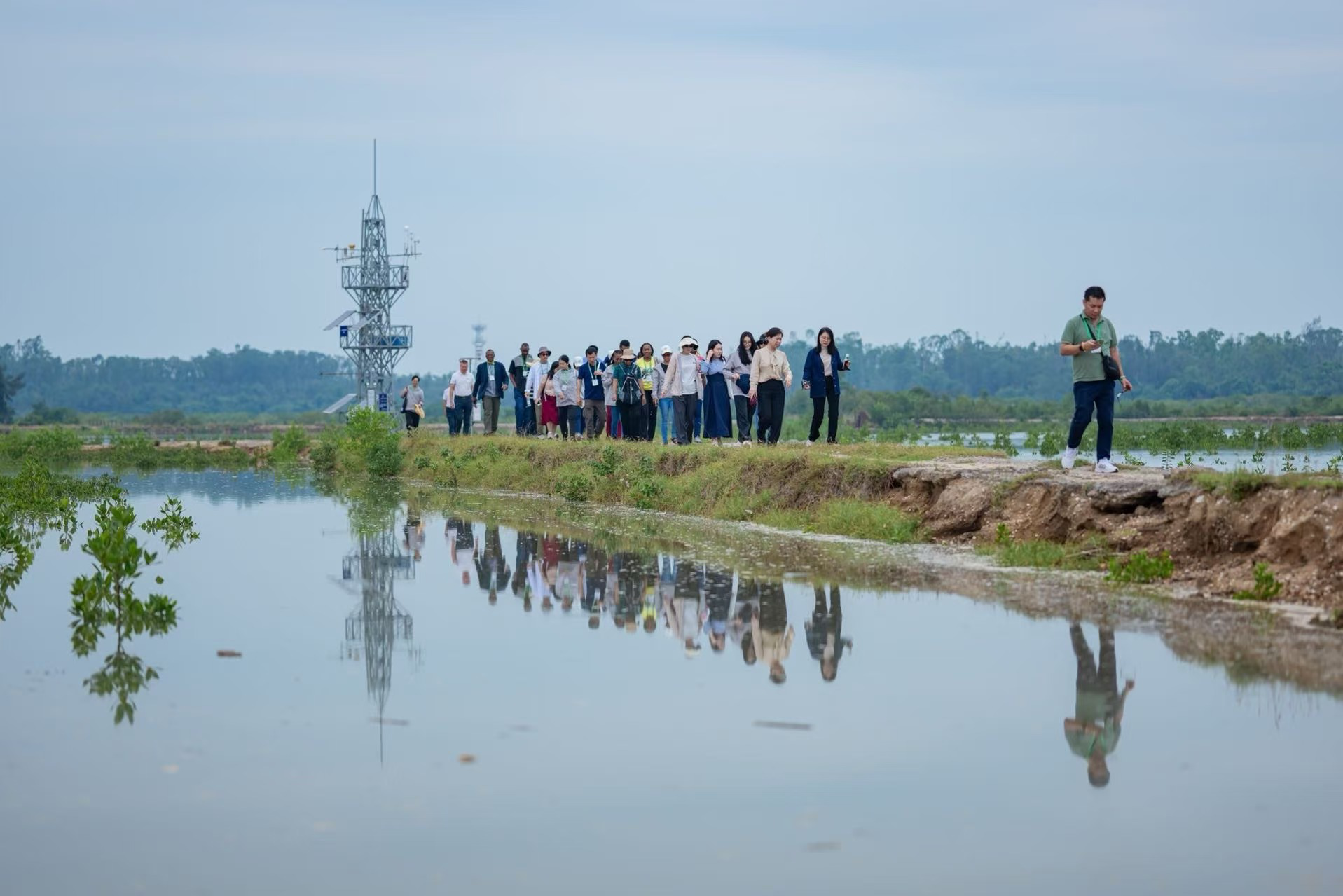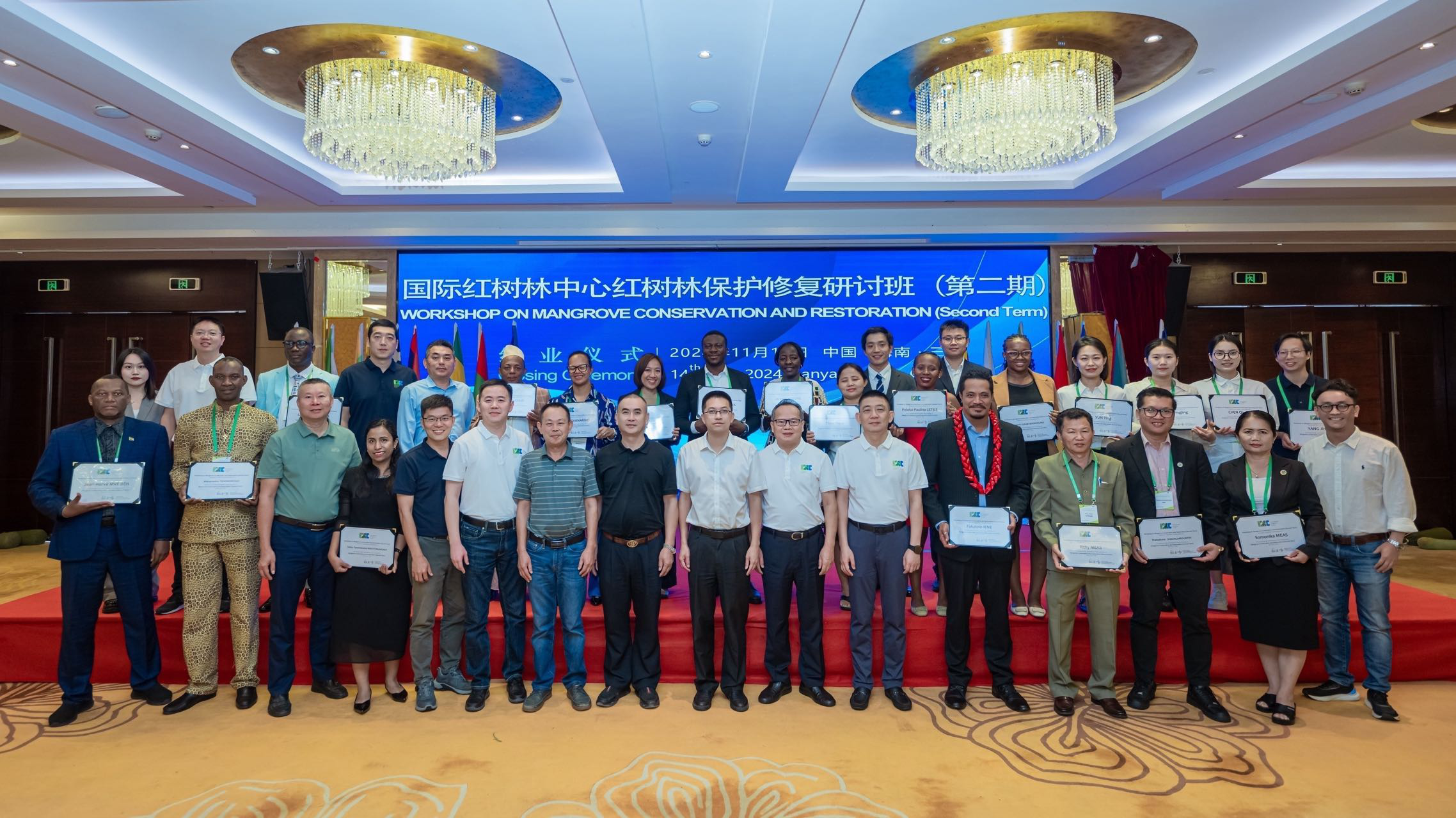The International Mangrove Center (IMC) successfully concluded the workshop on Mangrove Conservation and Restoration with a closing ceremony in Sanya, Hainan Province. Representatives from the Interim Secretariat of IMC, Hainan Provincial Forestry Bureau, Sanya Municipal Government, and the Shenzhen Planning and Natural Resources Bureau attended the ceremony and delivered speeches respectively, highlighting the importance of global cooperation in mangrove conservation.
From Nov. 1 to Nov. 15, the workshop brought together 21 officials from 15 countries. With the curriculum designed for practical relevance and effectiveness, the workshop featured a dynamic blend of expert-led lectures, field visits, and panel discussions. The sessions addressed critical topics such as the achievements of China’s Mangrove Conservation and Restoration Action Plan, shared insights on China’s implementation of the Convention on Wetlands, and explored international cooperation on mangrove protection. Leading experts from China and abroad led sessions on mangrove ecosystem, blue carbon, climate change adaptation, and wetland bird monitoring and protection. Participants visited mangrove reserves and wetland parks in Guangdong and Hainan, gaining practical insights into China’s mangrove conservation and restoration techniques and outcomes. They also shared valuable case studies and practices from their own countries.
The immersive field visit to key mangrove conservation sites still across Guangdong and Hainan provinces in China during this workshop. The East Bay Mangrove Demonstration Site is part of the largest coastal lagoon and urban bay along mainland China’s shoreline, also is one of the country’s largest artificial mangrove plantations, covering over 330 hectares. Its diverse mangrove species and rich benthic biodiversity provide critical over-wintering and stopover habitats for migratory birds, forming a unique “forest on the sea” landscape. The Zhanjiang Mangrove National Nature Reserve, spanning over 20,000 hectares along the Leizhou Peninsula, protects extensive mangrove wetlands and over 300 bird species, including globally endangered waterbirds such as the spoon-billed sandpiper and black-faced spoonbill. Recognized as a Ramsar Site and a UNESCO Biosphere Reserve, Zhanjiang Reserve plays a vital role in shoreline protection, biodiversity conservation, and carbon sequestration. These site visits not only allowed participants to engage directly with frontline conservation, the interactive exchanges during the visits also deepened understanding of China’s integrated approach to mangrove management as well as encouraged peer learning through the sharing of challenges and solutions.
Hosted by the IMC and co-organized by the Guangdong Neilingding-Futian National Nature Reserve Administration Bureau and the National Academy of Forestry and Grassland Administration, the workshop has strengthened capacities among conservation professionals, and enhanced knowledge sharing and technical exchange among IMC member states, so as to contribute to global efforts to mangroves conservation.

